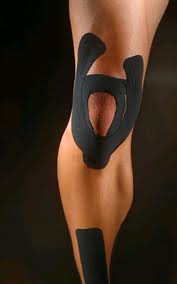Patellar Taping Changes Brain Activity
 A study just came out which relates to a previous post I did on kinesiotaping, so I decided to write up a quick summary.
Patellar taping is a common treatment for patellofemoral pain, but the mechanism of action remains unclear. There is some debate about whether the method works due to mechanical effects on patellar alignment, or changes in the brain due to alterations in sensory input. In my previous post I argued in favor of the latter interpretation and this study provides some supporting evidence.
A study just came out which relates to a previous post I did on kinesiotaping, so I decided to write up a quick summary.
Patellar taping is a common treatment for patellofemoral pain, but the mechanism of action remains unclear. There is some debate about whether the method works due to mechanical effects on patellar alignment, or changes in the brain due to alterations in sensory input. In my previous post I argued in favor of the latter interpretation and this study provides some supporting evidence.
The researchers recruited healthy volunteers and used functional magnetic resonance imaging to monitor their brain activity during knee movement with and without patellar taping.
They found that subjects moving without the tape demonstrated more brain activity in numerous parts of the brain related to motor output. So basically the brain did less work with the tape than without. I guess that's a good thing.
Previous research has shown that knee taping appears to improve knee coordination in subjects with poor proprioception but not in those with normal proprioception.
Of course none of this means that taping does not work through some other more local mechanism, or that it works at all, but it does give some support to the theory that any potential benefit is achieved through modulating the nervous system.
